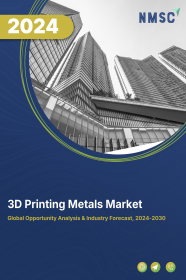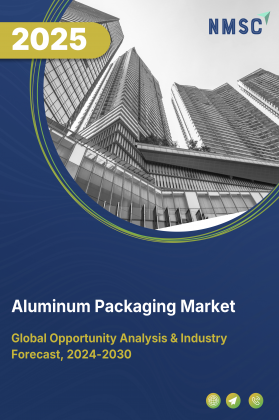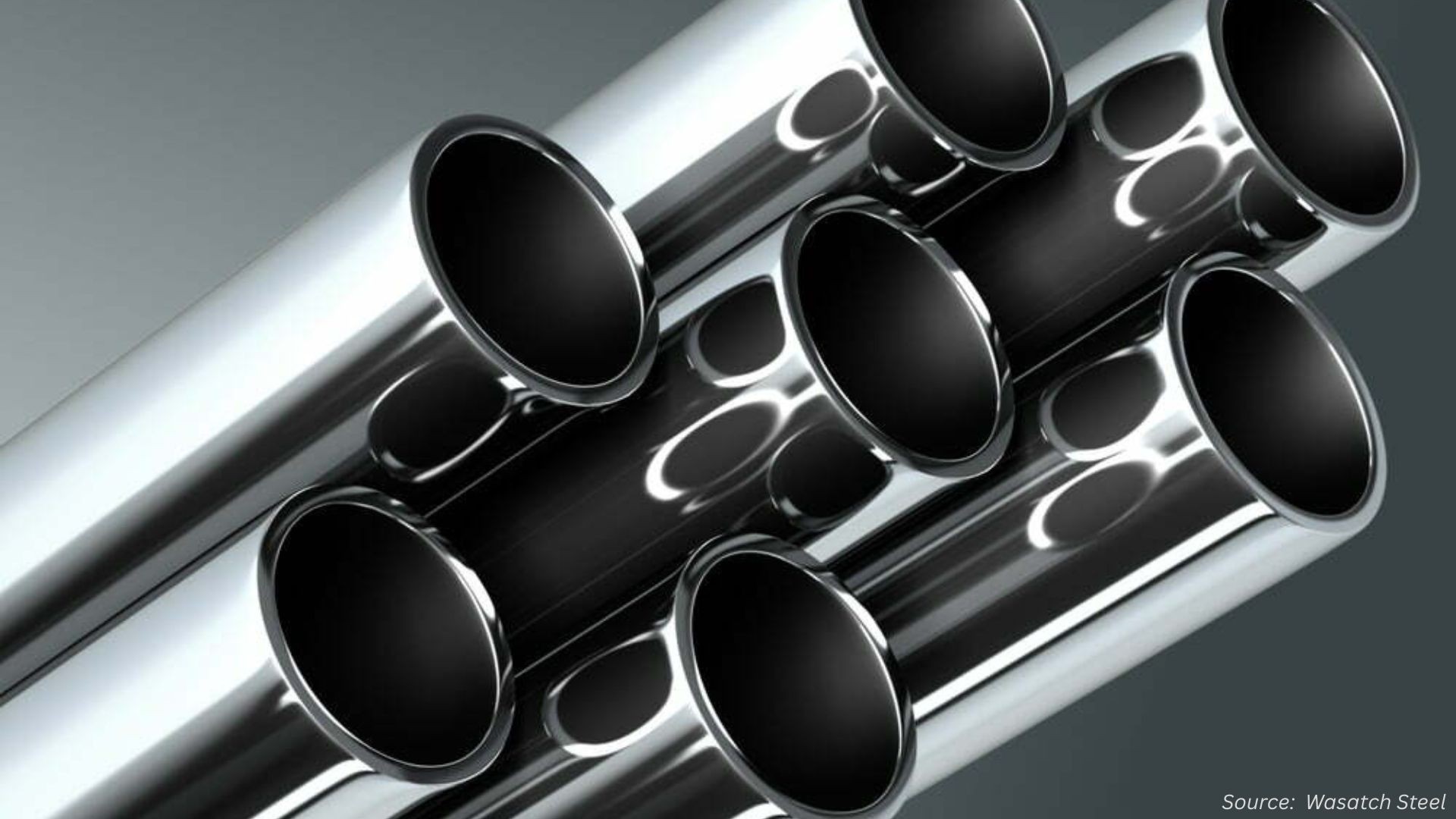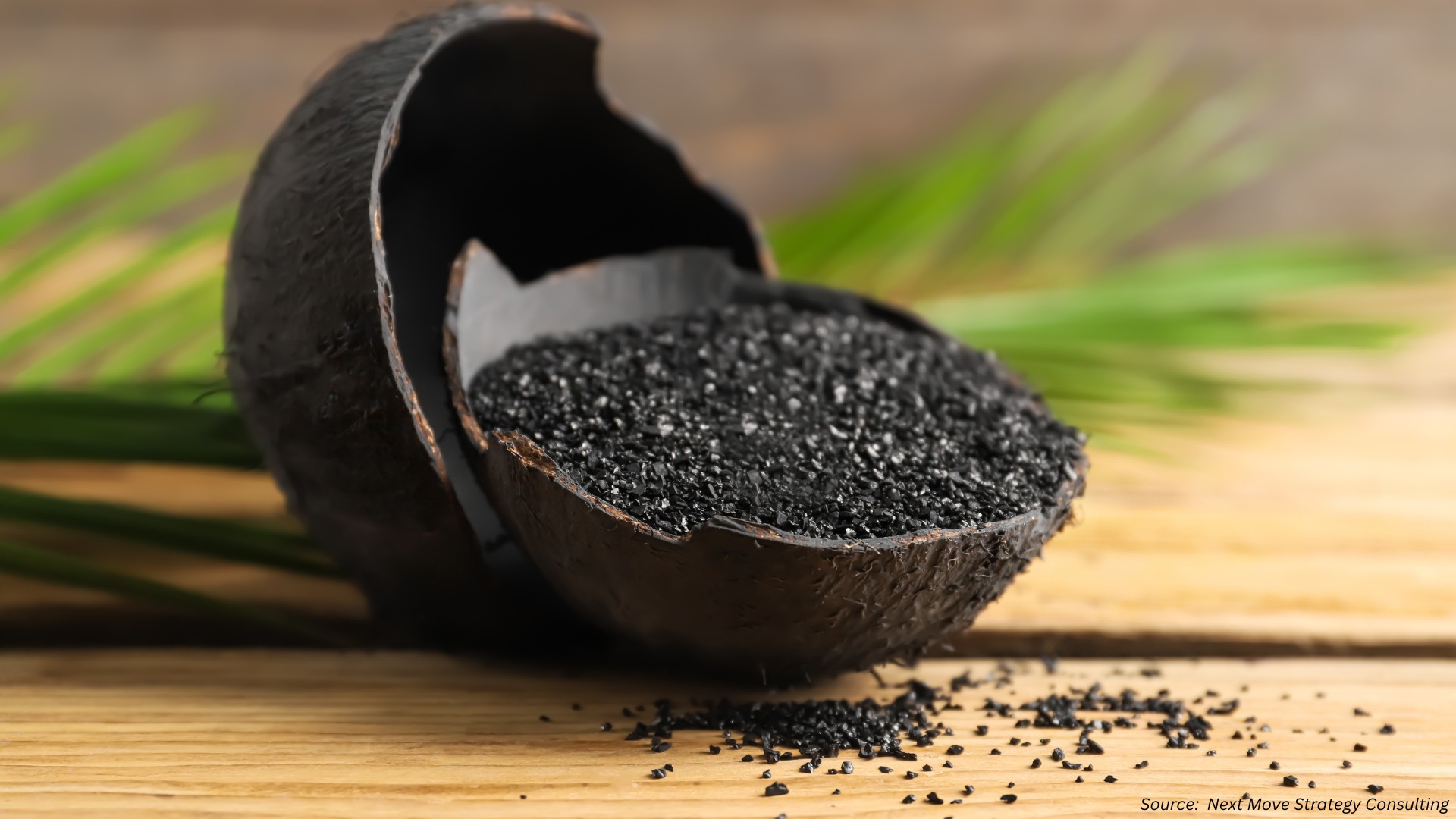
3D Printing Metals Market by Material (Titanium, Aluminum, Stainless Steel, Nickel, Inconel, and Others), by Form (Powder and Filament), by Technology (Vat Photopolymerization, Material Extrusion, Sheet Lamination, Binder Jetting, Material Jetting, and Others), by Application (Aerospace & Defense, Automotive, Healthcare, Building & Construction, Consumer Electronics, and Others) – Global Opportunity Analysis and Industry Forecast, 2024-2030
Market Definition
The 3D Printing Metals Market size was valued at USD 1.44 billion in 2023 and is predicted to reach USD 8.34 billion by 2030 with a CAGR of 28.6% from 2024 to 2030.
The 3D printing metals market refers to the segment of the additive manufacturing industry that focuses on utilizing metal materials for the creation of three-dimensional objects through additive processes. These metals are deposited layer by layer according to a digital design or Computer-Aided Design model, using techniques such as selective laser melting (SLM), direct metal laser sintering (DMLS), electron beam melting (EBM), and others. The resulting parts or products exhibit high precision, intricate geometries, and excellent mechanical properties, making them suitable for a wide range of applications across industries such as aerospace, automotive, healthcare, and engineering.
Market Dynamics and Trends
The rising adoption of 3D printing in the healthcare industry is increasing the demand for 3D printing metals. As healthcare providers increasingly rely on 3D printing to produce customized medical implants, devices, and intricate surgical instruments, there is a growing demand for metal additive manufacturing technologies.
These technologies enable the creation of complex, biocompatible metal components vital for personalized patient care. Consequently, the expanding usage of 3D printing in healthcare fuels innovation and investment in advanced metal additive manufacturing processes, contributing significantly to the growth of the 3D printing metals market.
Moreover, the increasing adoption of 3D printing in the automotive industry is a significant driver for the growth of the 3D printing metals market. As automotive manufacturers integrate 3D printing into their production processes, there is a rising demand for metal additive manufacturing technologies to fabricate high-performance components such as engine parts, brackets, and prototypes.
This adoption fuels innovation and investment in advanced metal 3D printing methods, leading to the development of new metal alloys and improved printing techniques. Consequently, the automotive sector's embrace of 3D printing drives the expansion of the 3D printing metals market by creating a robust demand for metal-based additive manufacturing solutions.
However, the high cost associated with 3D printing technologies serves as a significant restraint for the market's growth. These high upfront costs can deter smaller businesses or organizations with limited budgets from adopting 3D printing for metal manufacturing, thereby constraining the market's expansion.
On the contrary, hybrid manufacturing solutions present a promising future opportunity in the 3D printing metal market. By integrating additive and subtractive processes, these systems offer versatility, efficiency, and precision in producing complex metal components.
They enable rapid fabrication of intricate geometries through additive manufacturing, followed by precise machining for final finishing. With the potential to optimize workflows, reduce lead times, and minimize material waste, hybrid manufacturing is poised to revolutionize metal fabrication and creates future opportunity for upcoming years.
Market Segmentations and Scope of the Study
The 3D printing metals market is segmented on the basis of material, form, technology, application, and region. On the basis of material, the market is divided into titanium, aluminum, stainless steel, nickel, inconel, and others. On the basis of form, the market is divided into powder and filament. On the basis of technology, the market is segmented into vat photopolymerization, material extrusion, sheet lamination, binder jetting, material jetting, and others. On the basis of application, the market is classified into aerospace & defense, automotive, healthcare, building & construction, consumer electronics, and others. Regional breakdown and analysis of each of the aforesaid segments include regions comprising North America, Europe, Asia-Pacific, and RoW.
Geographical Analysis
North America dominates the 3D printing metals market and is expected to continue its dominance during the forecast period. The presence of key market players such as GE Additive, 3D Systems Corporation, Stratasys Ltd., and others.
These market players are driving innovation and advancing technology in metal additive manufacturing, contributing to the region's growth in this sector. With their extensive research and development efforts, robust infrastructure, and strategic collaborations, they are poised to further expand the adoption of 3D printing metals across various industries in North America.
For instance, in November 2022, 3D Systems expanded its industry-leading materials portfolio by introducing two new materials, Certified HX and Certified CuCr2.4. These materials are specifically certified for use with the company’s DMP Flex 350 and DMP Factory 350 3D printers, with HX also certified for the DMP Factory 500.
This launch addresses a wide range of applications in industries such as energy, industrial gas turbines (IGT), consumer goods, aerospace & defense, and automotive, catering to the demand for high strength and corrosion-resistance.
Moreover, the escalating adoption of 3D printing within the automotive industry plays a pivotal role in shaping the trajectory of the 3D printing metal market in the region. As automotive manufacturers increasingly integrate 3D printing technologies into their production processes, there arises a heightened demand for metal additive manufacturing solutions.
This surge is driven by the automotive sector's need for lightweight, intricately designed metal components, such as engine parts and prototypes, which can be efficiently and precisely fabricated through 3D printing. For instance, in September 2022 Tesla announced that it has used FDM 3D printing to produce spare parts for the Tesla Model so that it can address the manufacturing fault in the Model Y and start its production procedure.
On the other hand, Europe is expected to show a steady rise in the market driven by the increasing adoption of 3D printing technology within the defense industry. This momentum is propelled by escalating government initiatives aimed at fostering 3D printing applications for military purposes, thereby stimulating market growth.
A notable example is the UK Ministry of Defence's (MOD) launch of project TAMPA in October 2022. This seven-year program aims to augment the procurement of 3D printed parts by the UK military, exemplifying the concerted efforts to leverage additive manufacturing technologies for defense applications across Europe.
Moreover, the rising demand for 3D printing metals in the region is closely linked to the expanding utilization of 3D printing across various industries, including healthcare. This demand is further fueled by recent collaborations and agreements, such as the partnership between Eplus3D, a prominent provider of metal 3D printer solutions, and BioSummer 3D, a leading provider of dental products and services in France.
Their distribution agreement, announced in April 2022, aims to facilitate the digital transformation of3D printing metals by providing access to advanced metal 3D printing technologies. As healthcare providers increasingly turn to 3D printing for the production of customized medical implants and devices, there is a growing need for high-quality 3D printing metals to meet these demands. This trend underscores the significant role of 3D printing metals in driving innovation and growth within the market, particularly in sectors including healthcare where precision and customization are paramount.
Competitive Landscape
Various market players operating in the 3D printing metals market includes EOS GmbH, GE Additive, Materialise NV, Renishaw PLC, SLM Solutions Group AG, 3D Systems Corporation, MakerBot Industries, LLC,voxeljet AG,Protolabs, and Desktop Metal, Inc. These market players continue to adopt various market development strategies including new launches and partnership to maintain their dominance in the 3D printing metals market.
For instance, in November 2023, Renishaw introduced the RenAM 500 Ultra Metal AM system, the newest addition to the RenAM 500 series. This lineup also features the Flex system, tailored for research and development endeavors, alongside the flagship closed-loop powder recirculation model designed for large-scale series production. This release showcases Renishaw's commitment to advancing metal additive manufacturing technology across various applications, catering to both prototyping and production needs within industries such as aerospace, automotive, and healthcare. Renishaw's continued innovation in this field highlights the growing significance of metal 3D printing in meeting the evolving demands of manufacturing processes.
For instance, in May 2023, Stratasys Ltd. and Desktop Metal, Inc. have entered into a definitive agreement whereby the companies will combine in an all-stock transaction valued at approximately $1.8 billion. The companies aim to establish a unified additive manufacturing entity equipped to cater to the evolving demands of customers in the manufacturing sector. This merger underscores the growing importance of metal additive manufacturing in meeting the diverse needs of industries, including aerospace, automotive, and healthcare, highlighting the pivotal role of 3D printing metals in driving innovation and growth within the additive manufacturing landscape.
Key Benefits
-
The report provides quantitative analysis and estimations of the 3D printing metals market from 2024 to 2030, which assists in identifying the prevailing market opportunities.
-
The study comprises a deep dive analysis of the 3D printing metals market including the current and future trends to depict prevalent investment pockets in the market.
-
Information related to key drivers, restraints, and opportunities and their impact on the 3D printing metals market is provided in the report.
-
Competitive analysis of the players, along with their market share is provided in the report.
-
SWOT analysis and Porters Five Forces model is elaborated in the study.
-
Value chain analysis in the market study provides a clear picture of roles of stakeholders.
Key Market Segments
By Material
-
Titanium
-
Aluminum
-
Stainless Steel
-
Nickel
-
Inconel
-
Others
By Form
-
Powder
-
Filament
By Technology
-
Vat Photopolymerization
-
Material Extrusion
-
Sheet Lamination
-
Binder Jetting
-
Material Jetting
-
Others
By Application
-
Aerospace & Defense
-
Automotive
-
Healthcare
-
Building & Construction
-
Consumer Electronics
-
Others
By Region
-
North America
-
The U.S
-
Canada
-
Mexico
-
-
Europe
-
The UK
-
Germany
-
France
-
Italy
-
Spain
-
Denmark
-
Netherlands
-
Finland
-
Sweden
-
Norway
-
Russia
-
Rest of Europe
-
-
Asia-Pacific
-
China
-
Japan
-
India
-
South Korea
-
Australia
-
Indonesia
-
Singapore
-
Taiwan
-
Thailand
-
Rest of Asia Pacific
-
-
RoW
-
Latin America
-
Middle East
-
Africa
-
Key Players
-
EOS GmbH
-
GE Additive
-
Materialise NV
-
Renishaw PLC
-
SLM Solutions Group AG
-
3D Systems Corporation
- MakerBot Industries, LLC
-
voxeljet AG
-
Protolabs
-
Desktop Metal, Inc.
REPORT SCOPE AND SEGMENTATION:
|
Parameters |
Details |
|
Market Size in 2023 |
USD 1.44 billion |
|
Revenue Forecast in 2030 |
USD 8.34 billion |
|
Growth Rate |
CAGR of 28.6% from 2024 to 2030 |
|
Analysis Period |
2023–2030 |
|
Base Year Considered |
2023 |
|
Forecast Period |
2024–2030 |
|
Market Size Estimation |
Billion (USD) |
|
Growth Factors |
|
|
Countries Covered |
28 |
|
Companies Profiled |
10 |
|
Market Share |
Available for 10 companies |
|
Customization Scope |
Free customization (equivalent up to 80 working hours of analysts) after purchase. Addition or alteration to country, regional, and segment scope. |
|
Pricing and Purchase Options |
Avail customized purchase options to meet your exact research needs. |




















 Speak to Our Analyst
Speak to Our Analyst

























